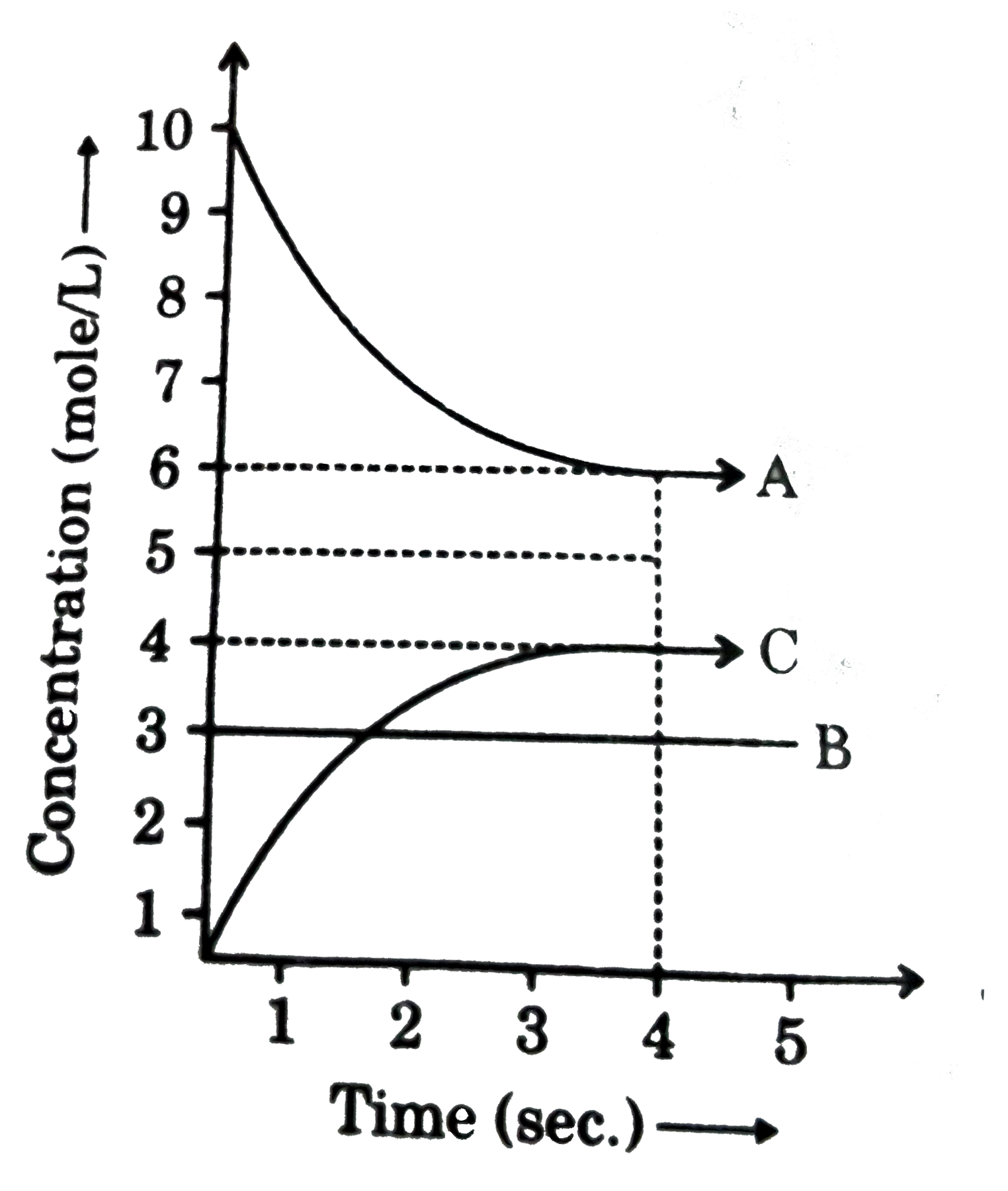A,B and C react in the 1:1:1 stoichiometric ratio. The concentration of A,B and C where found to vary with time as shown in the figure below:

Which of the following equilibrium reaction represents the correct variation of concentration with time?
C(g)+A(g)⇔B(g)
A(g)+B(g)⇔C(g)
C(g)+B(g)⇔A(g)
A(g)+B(g)⇔C(g)
The correct Answer is:D
Step by step video, text & image solution for A,B and C react in the 1:1:1 stoichiometric ratio. The concentration of A,B and C where found to vary with time as shown in the figure below: Which of the following equilibrium reaction represents the correct variation of concentration with time? by Chemistry experts to help you in doubts & scoring excellent marks in Class 12 exams.
Updated on:21/07/2023Topper's Solved these Questions
- GRAPHICAL INTERPRETATIONBook:GRB PUBLICATIONChapter:GRAPHICAL INTERPRETATIONExercise:Comprehension 18
Explore 1 Video
- GRAPHICAL INTERPRETATIONBook:GRB PUBLICATIONChapter:GRAPHICAL INTERPRETATIONExercise:Comprehension 19
Explore 1 Video
- GRAPHICAL INTERPRETATIONBook:GRB PUBLICATIONChapter:GRAPHICAL INTERPRETATIONExercise:Comprehension 16
Explore 1 Video
- F-BLOCK ELEMENTSBook:GRB PUBLICATIONChapter:F-BLOCK ELEMENTSExercise:Subjective type
Explore 7 Videos
- HYDROCARBON (ALIPHATIC)Book:GRB PUBLICATIONChapter:HYDROCARBON (ALIPHATIC)Exercise:Previous years jee questions
Explore 28 Videos
Similar Questions
The current (I) in the inductance is varying with time according to the plot shown in figure.

Which one of the following is the correct variation of voltage with time in the coil?
View SolutionThe progress of the reaction A⇔nB with time is persented in the figure given below:

Determine
a. The value of n.
b. The equilibrium constant K.
c. The initial rate of concentration of A.
View Solution
Knowledge Check
X, Y and Z react in the 1:1:1 stoichiometric ratio.
The concentration of X, Y and Z we are found to vary with time as shown in the figure below:

Which of the following equilibrium reaction represents the correct variation of concentration with time?AX(g)+Y(g)⇔Z(g)BX(g)+Y(s)⇔Z(g)CZ(g)+Y(g)⇔X(g)DZ(g)+X(g)⇔Y(g)A,B and C react in the 1:1:1 stoichiometric ratio. The concentration of A,B and C where found to vary with time as shown in the figure below:

The value of equilibrium repreasented in above sketch will be :A127B23C2D29X, Y and Z react in the 1:1:1 stoichiometric ratio.
The concentration of X, Y and Z we are found to vary with time as shown in the figure below:

If the above equilibrium is established in a 2.0L container by taking reactants in sufficient amount then how many moles of components Y must have reacted to establish the equilibrium?A0B6C12D8
For a reaction , the concentration of the reactant C varies with time t as shown by the following graph .

what do you conclude about the order of the reaction ?
View SolutionX, Y and Z react in the 1:1:1 stoichiometric ratio.
The concentration of X, Y and Z we are found to vary with time as shown in the figure below:

The value of the equilibrium constant (Kc) for the equilibrium represented the in above sketch will be
View SolutionThe current (I) in the inductance is varying with time according to the plot shown in figure

Which one of the following is the correct variation of voltage with time in the coil ?
View SolutionThe current (I) in the inductance is varying with time acroding to the plot shown in figure.

Which one of thhe following is the correct variation of voltage with time in the coil ?
View SolutionConsider the reaction A→B. The concentration of both the reactants and the products varies exponentially with time. Which of the following figure correctly describes the change in concentration of reactants and products with time ?
View Solution

